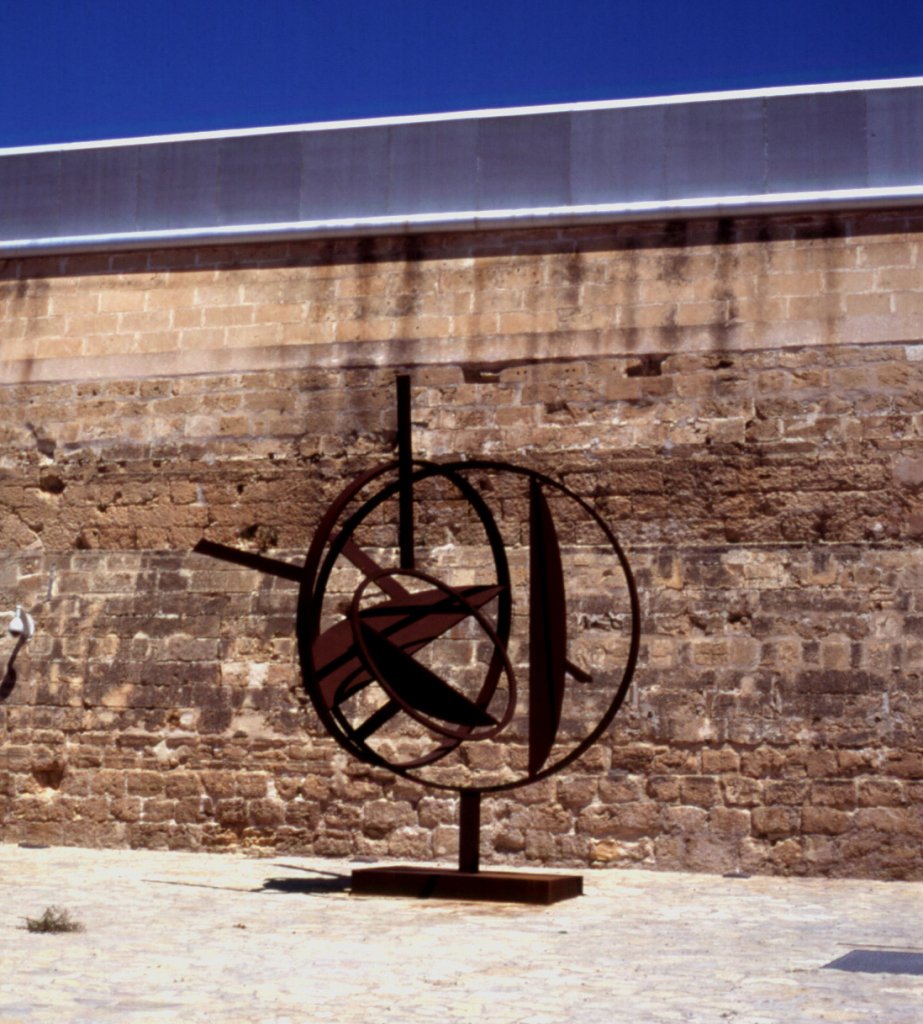
- Artist:
- Jorge Oteiza
- Date:
- 1957-2003
- Technique:
- Corten steel
- Dimensions:
- 490 x 412 x 387 cm
- Origin:
- Es Baluard Museu d'Art Contemporani de Palma
- Registration number:
- 1
- Acquisition year:
- 2003
- Exposed:
- Yes
This large exterior work is associated to a mature stage in the career of this artist, the second half of the 1950s, his final phase as a sculptor, when Jorge Oteiza focussed on spatial opening and made space the protagonist. From here arose the idea of the emptying of the cube and the sphere, an idea included in the manifesto-text Propósito Experimental 1956-1957, a theoretical key in the evolution of the artist’s sculptural concept, which developed in parallel to his formal research. This text advocates an opening of mass, and declares the importance of the void and its appropriation with the use of light shapes and elements which strengthen the energetic and the spatial. Obviously, this was achieved by introducing new materials that were more malleable and lighter – especially iron – which allowed him to reach the void.
We can see this concept of sculpture today in the work in the Es Baluard Collection: a large sphere, the perfect geometric figure par excellence, which represents the moon here, and its projections; there is no more symbolic figure to represent it. A moon drawn by three intertwined Corten steel circles that form the sphere which projects several rays, the light, and inside it are three half-circumferences in a symbolism of numerical repetition.
Oteiza completed many works in groups or series on a small scale. He only developed those he considered to be more representative in the definitive material or on a larger scale. This is the case of Hillargia. La luna como luz movediza, the model or mock-up for which was produced in 1957 and belonging to the series “De la desocupación de la esfera” (On the Emptying of the Sphere) was cast in a larger size in 2003. The model was a gift from the artist in a decisive gesture of support for the project to create the Es Baluard museum.
C.J.
Jorge Oteiza , was a renovator of sculpture in Spain and internationally speaking one of the most prominent sculptors of the 20th century. In his early days, his works were compact blocks which would later evolve, after he spent some time in Latin America and above all due to the influence of Moore, towards a lighter style of sculpture until attaining the void. His largest commission would come in 1950 when he won the tender to produce the sculptures for the Aranzazu Basilica, although they would not be installed until 1969. In 1959, he announced his intention to cease his work on sculpture in order to direct his interest towards theoretical thought, politics and above all, the national identity of the Basque Country. He was awarded the international sculpture prize at the IV São Paulo Art Biennial in 1957.
C.J.

